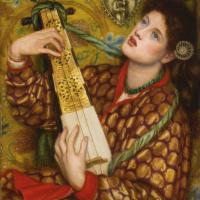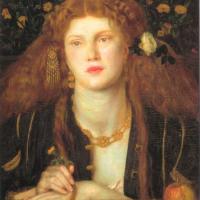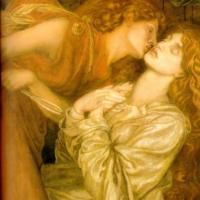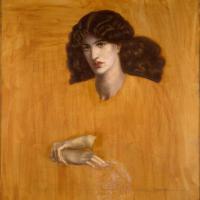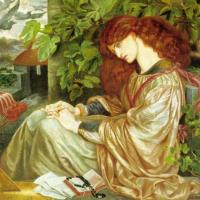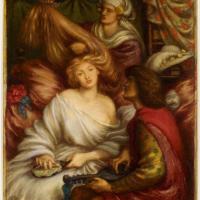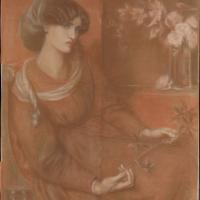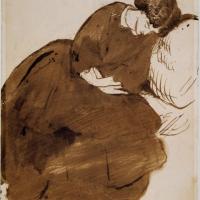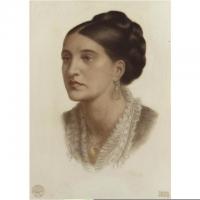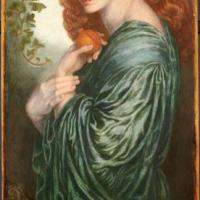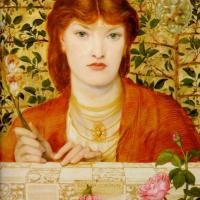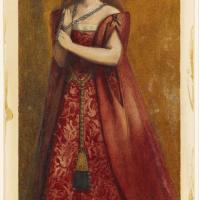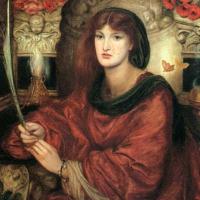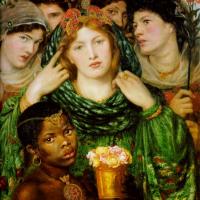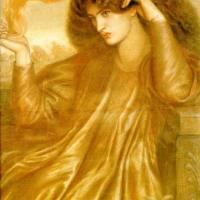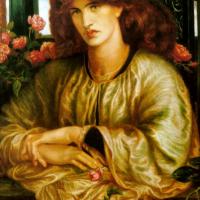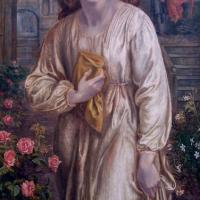Dante Gabriel Rossetti
A Christmas Carol
$480.00
Belcolore
$540.00
Bocca Baciata
$540.00
Dantis Amore
$480.00
La Donna Della Finestra
$540.00
La Pia De' Tolomei
$540.00
Morning Music
$480.00
Proserpine
$480.00
Sancta Lilias
$540.00
Sibylla Palmifera
$480.00
The Beloved
$480.00
The Day Dream
$480.00
The Girlhood Of Mary Virgin
$480.00
The Lady Of The Flame
$480.00
The Lady Of The Window
$480.00
The Salutation Of Beatrice
$480.00
Dante Gabriel Rossetti
Dante Gabriel Rossetti (1828-1882)
Gabriel Charles Dante Rossetti (12 May 1828 – 9 April 1882), generally known as Dante Gabriel Rossetti was a British poet, illustrator, painter and translator, and a member of the Rossetti family. He founded the Pre-Raphaelite Brotherhoodin 1848 with William Holman Hunt and John Everett Millais. Rossetti was later to be the main inspiration for a second generation of artists and writers influenced by the movement, most notably William Morris and Edward Burne-Jones. His work also influenced the European Symbolists and was a major precursor of the Aesthetic movement.
Rossetti's art was characterised by its sensuality and its medieval revivalism. His early poetry was influenced by John Keats. His later poetry was characterised by the complex interlinking of thought and feeling, especially in his sonnet sequence, The House of Life. Poetry and image are closely entwined in Rossetti's work. He frequently wrote sonnets to accompany his pictures, spanning from The Girlhood of Mary Virgin (1849) and Astarte Syriaca(1877), while also creating art to illustrate poems such as Goblin Market by the celebrated poet Christina Rossetti, his sister.
Rossetti's personal life was closely linked to his work, especially his relationships with his models and muses Elizabeth Siddal, Fanny Cornforthand Jane Morris.
The youthful Rossetti is described as "self-possessed, articulate, passionate and charismatic" but also "ardent, poetic and feckless". Like all his siblings, he aspired to be a poet and attended King's College School, in its original location near the Strand in London. He also wished to be a painter, having shown a great interest in Medieval Italian art. He studied at Henry Sass' Drawing Academy from 1841 to 1845, when he enrolled in the Antique School of the Royal Academy, which he left in 1848. After leaving the Royal Academy, Rossetti studied under Ford Madox Brown, with whom he retained a close relationship throughout his life.
Rossetti's first major paintings in oil display the realist qualities of the early Pre-Raphaelite movement. Stung by criticism of his second major painting, Ecce Ancilla Domini, exhibited in 1850, and the "increasingly hysterical critical reaction that greeted Pre-Raphaelitism" that year, Rossetti turned to watercolours, which could be sold privately. Although his work subsequently won support from John Ruskin, Rossetti only rarely exhibited thereafter.
In 1850, Rossetti met Elizabeth Siddal, an important model for the Pre-Raphaelite painters. Over the next decade, she became his muse, his pupil, and his passion. They were married in 1860. Rossetti's incomplete picture Found, begun in 1853 and unfinished at his death, was his only major modern-life subject. It depicted a prostitute, lifted from the street by a country drover who recognises his old sweetheart. However, Rossetti increasingly preferred symbolic and mythological images to realistic ones.
For many years, Rossetti worked on English translations of Italian poetry including Dante Alighieri's La Vita Nuova (published as The Early Italian Poets in 1861). These and Sir Thomas Malory's Le Morte d'Arthur inspired his art of the 1850s. He created a method of painting in watercolours, using thick pigments mixed with gum to give rich effects similar to medieval illuminations. He also developed a novel drawing technique in pen-and-ink. His first published illustration was "The Maids of Elfen-Mere" (1855), for a poem by his friend William Allingham, and he contributed two illustrations to Edward Moxon's 1857 edition of Alfred, Lord Tennyson's Poems and illustrations for works by his sister Christina Rossetti.
Around 1860, Rossetti returned to oil painting, abandoning the dense medieval compositions of the 1850s in favour of powerful close-up images of women in flat pictorial spaces characterised by dense colour. These paintings became a major influence on the development of the European Symbolist movement. In them, Rossetti's depiction of women became almost obsessively stylised. He portrayed his new lover Fanny Cornforth as the epitome of physical eroticism, whilst Jane Burden, the wife of his business partner William Morris, was glamorised as an ethereal goddess. "As in Rossetti's previous reforms, the new kind of subject appeared in the context of a wholesale reconfiguration of the practice of painting, from the most basic level of materials and techniques up to the most abstract or conceptual level of the meanings and ideas that can be embodied in visual form." These new works were based not on medievalism, but on the Italian High Renaissance artists of Venice, Titian and Veronese.
In 1861, Rossetti became a founding partner in the decorative arts firm, Morris, Marshall, Faulkner & Co. with Morris, Burne-Jones, Ford Madox Brown, Philip Webb, Charles Faulkner and Peter Paul Marshall. Rossetti contributed designs for stained glass and other decorative objects.
Rossetti's wife, Elizabeth Siddal, died of an overdose of laudanum in 1862, shortly after giving birth to a stillborn child. Rossetti became increasingly depressed, and on the death of his beloved Lizzie, buried the bulk of his unpublished poems with her at Highgate Cemetery, though he later had them dug up. He idealised her image as Dante's Beatrice in a number of paintings, such as Beata Beatrix.
The savage reaction of critics to Rossetti's first collection of poetry contributed to a mental breakdown in June 1872, and although he joined Jane Morris at Kelmscott that September, he "spent his days in a haze of chloral and whisky". The next summer he was much improved, and both Alexa Wilding and Jane sat for him at Kelmscott, where he created a soulful series of dream-like portraits. In 1874, Morris reorganised his decorative arts firm, cutting Rossetti out of the business, and the polite fiction that both men were in residence with Jane at Kelmscott could not be maintained. Rossetti abruptly left Kelmscott in July 1874 and never returned. Toward the end of his life, he sank into a morbid state, darkened by his drug addiction to chloral hydrate and increasing mental instability. He spent his last years as a recluse at Cheyne Walk.
On Easter Sunday, 1882, he died at the country house of a friend, where he had gone in a vain attempt to recover his health, which had been destroyed by chloral as his wife's had been destroyed by laudanum. He died of Bright's Disease, a disease of the kidneys from which he had been suffering for some time. He had been housebound for some years on account of paralysis of the legs, though his chloral addiction is believed to have been a means of alleviating pain from a botched hydrocele removal. He had been suffering from alcohol psychosis for some time brought on by the excessive amounts of whisky he used to drown out the bitter taste of the chloral hydrate. He is buried in the churchyard of All Saints at Birchington-on-Sea, Kent, England.


